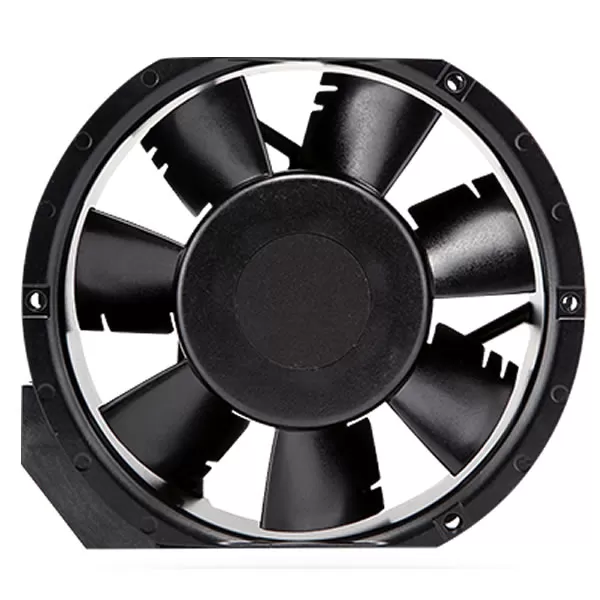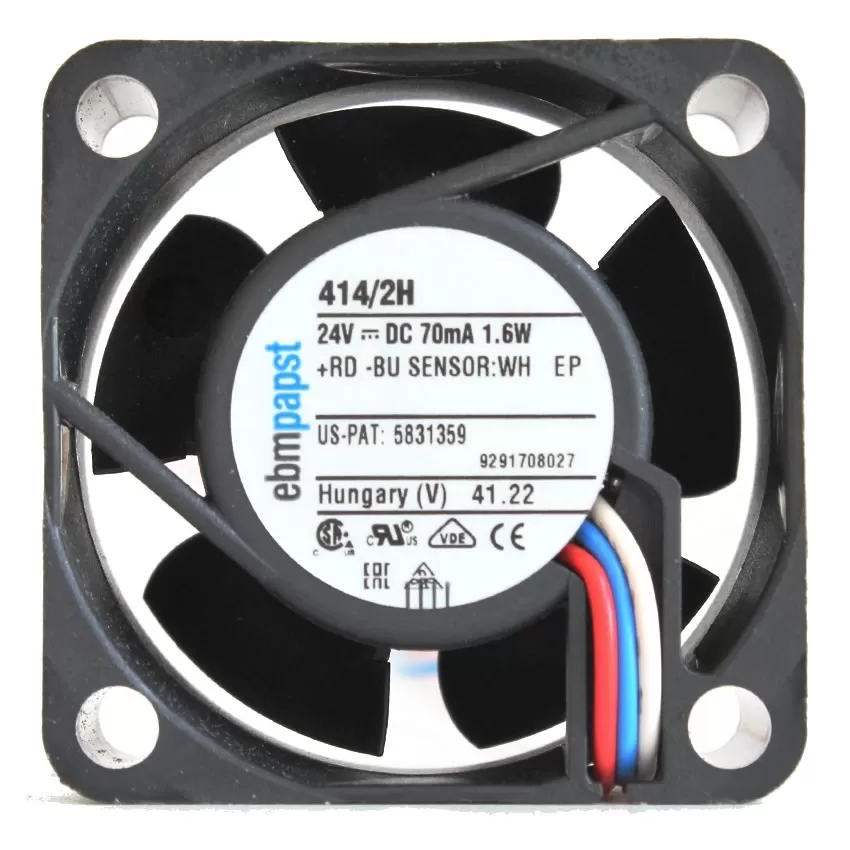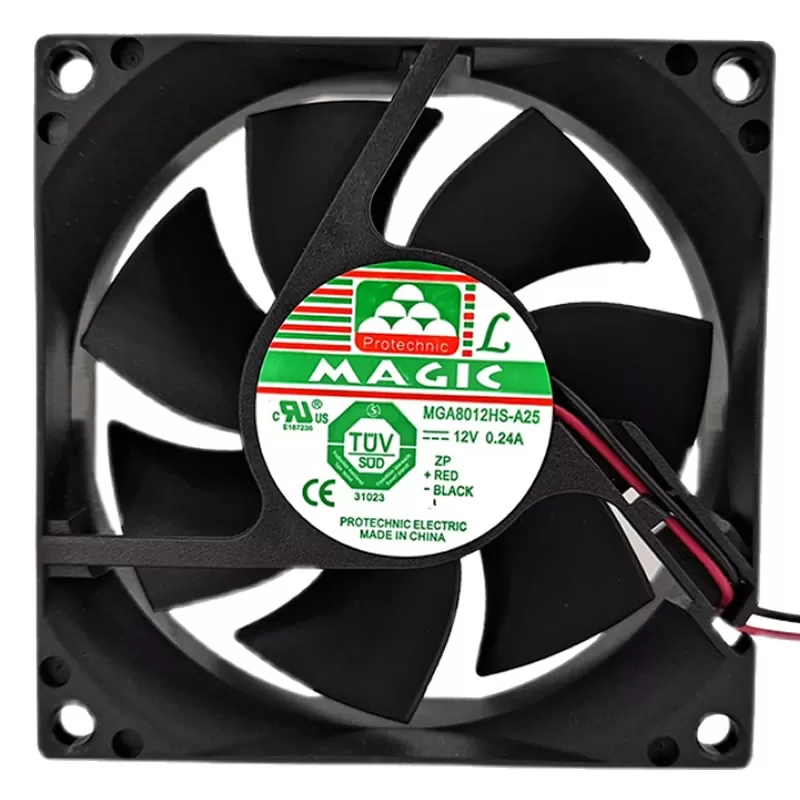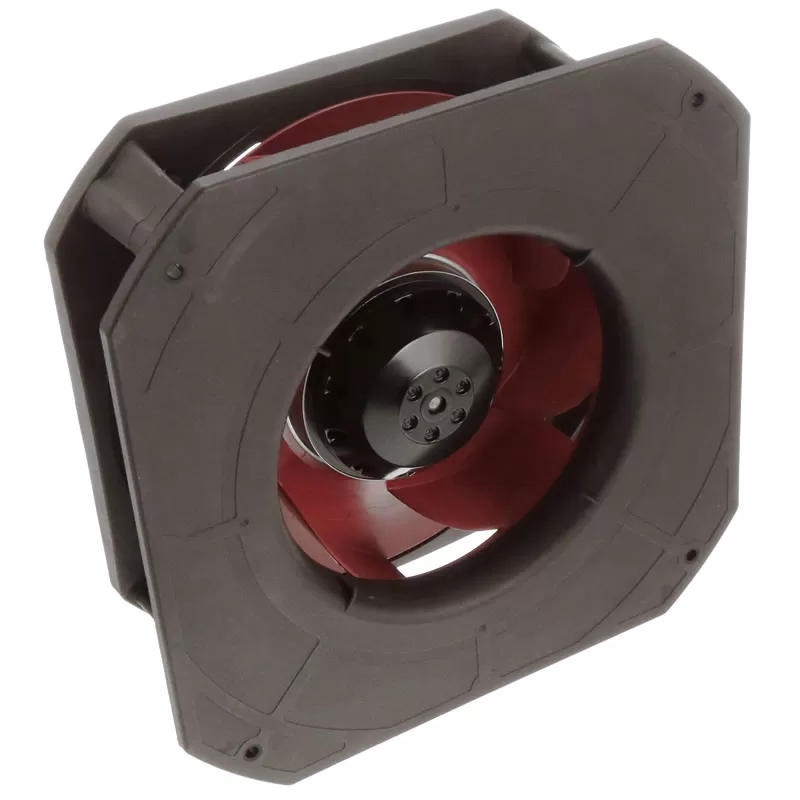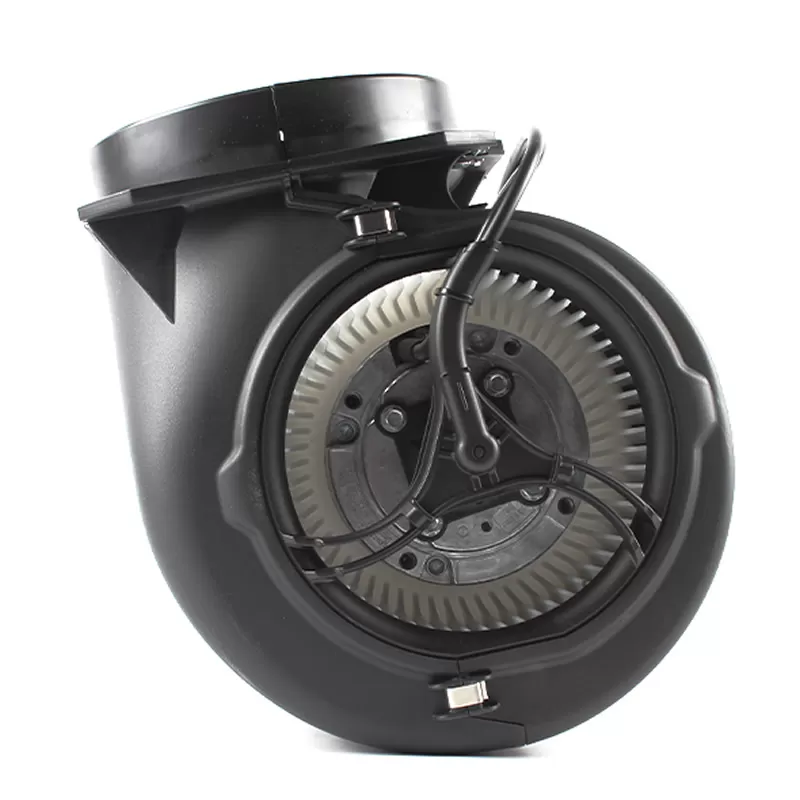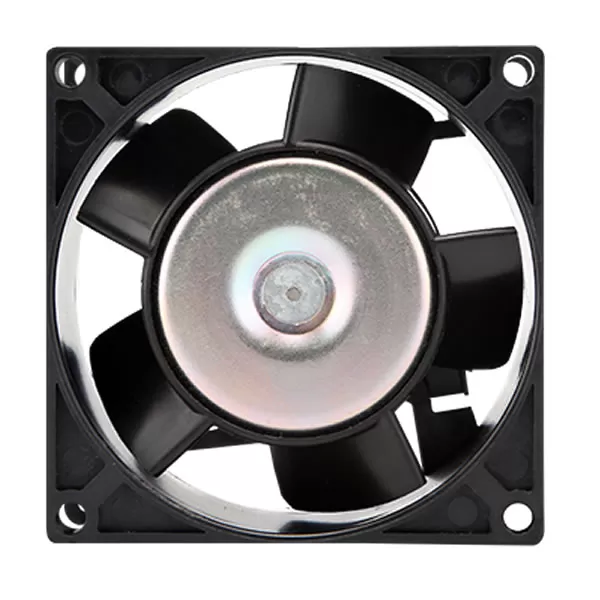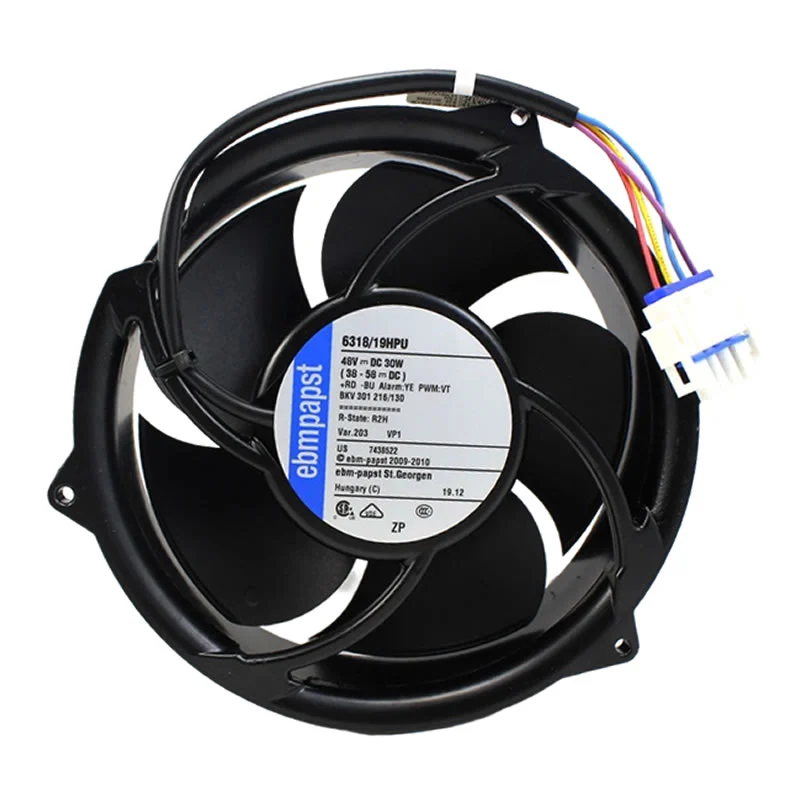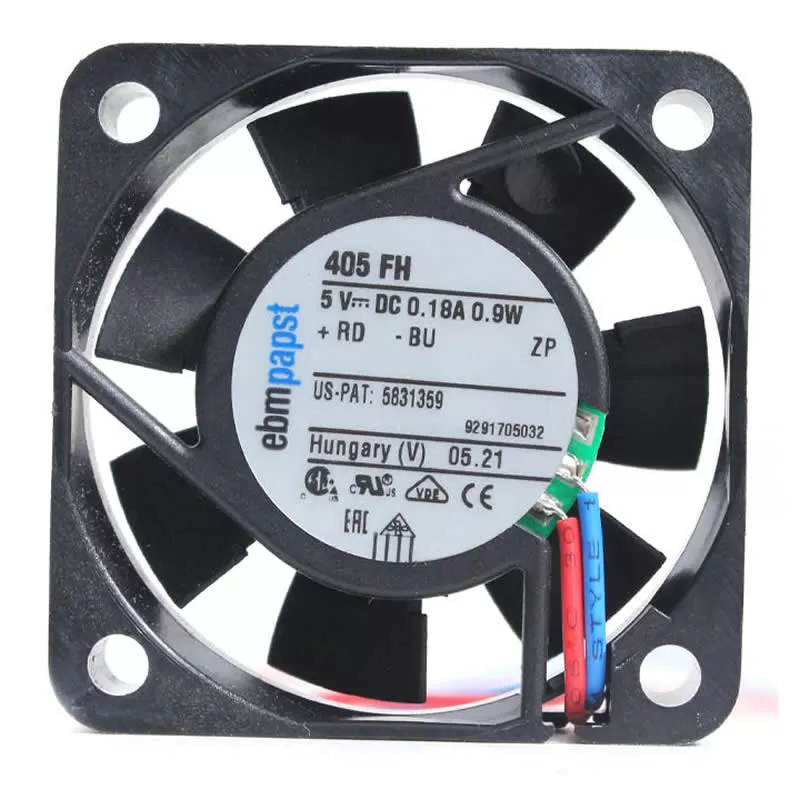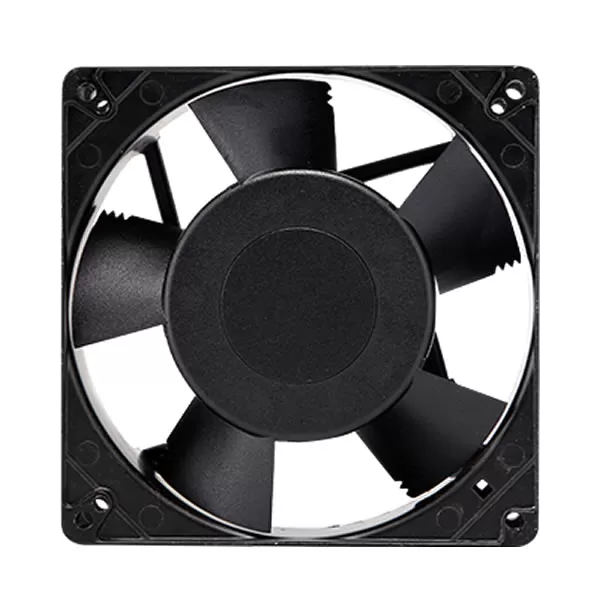Here are common issues with DC fans and their troubleshooting solutions:
1. Fan Not Spinning
Possible Causes
- Power Supply Problem: Loose or disconnected power cables, faulty adapter, or insufficient voltage (e.g., using a 12V fan with a 5V supply).
- Motor Failure: Burned-out motor due to overvoltage, prolonged use, or manufacturing defects.
- Blocked Rotor: Debris (dust, hair, lint) stuck in the fan blades or bearings, preventing rotation.
- Faulty Controller/PCB: Issues with the speed control circuit (e.g., PWM signal failure in computer fans).
Solutions
- Check power connections: Ensure the cable is securely plugged in and the voltage matches the fan’s rating (e.g., 12V, 24V). Test with a different power source if possible.
- Clean the fan: Turn off power, remove the fan, and gently clear obstructions from blades and bearings with a soft brush or compressed air.
- Test the motor: Connect the fan directly to a compatible power source (bypassing the controller). If it still doesn’t spin, the motor is likely faulty and needs replacement.
2. Unusual Noise (Rattling, Grinding, Whining)
Possible Causes
- Dust Accumulation: Dust on blades or in bearings creates imbalance or friction.
- Worn Bearings: Lubricant depletion (common in sleeve or rifle bearings) or physical damage to bearings.
- Loose Mounting: Fans not secured properly, causing vibrations against the case or housing.
- Blade Damage: Bent or cracked blades leading to uneven rotation.
Solutions
- Clean and lubricate bearings: For non-sealed bearings (e.g., sleeve bearings), add a drop of lightweight machine oil (avoid over-lubrication). Sealed bearings (e.g., ball bearings) cannot be lubricated and may need replacement.
- Tighten mounts: Secure the fan with screws or vibration-dampening pads to reduce resonance.
- Inspect blades: Gently bend minor blade bends back (if plastic) or replace the fan if blades are cracked or severely damaged.
3. Inconsistent Speed or Stopping/Starting
Possible Causes
- Voltage Fluctuations: Unstable power supply (e.g., aging batteries, faulty DC-DC converter).
- PWM Signal Issues: For PWM-controlled fans, a malfunctioning motherboard/speed controller may send erratic signals.
- Thermal Sensor Failure: In computer fans, a broken temperature sensor may misjudge cooling needs.
Solutions
- Stabilize power: Use a regulated power supply or replace aging batteries. Test with a direct DC voltage source (e.g., 12V battery) to rule out voltage issues.
- Bypass PWM control: Connect the fan to a fixed voltage (e.g., 12V) to see if it runs consistently. If yes, the issue is with the controller, not the fan.
- Replace the fan or controller: If the problem persists, the fan’s internal speed control circuit may be faulty.
4. Overheating (Fan Not Cooling Effectively)
Possible Causes
- Clogged Air Vents: Dust blocking the fan’s intake or exhaust, reducing airflow.
- Incorrect Installation: Fan installed in the wrong direction (e.g., intake instead of exhaust, or vice versa).
- Under-voltage Operation: Running the fan at a voltage lower than its rated specs, causing reduced RPM.
Solutions
- Clean air pathways: Remove dust from the fan and surrounding vents using compressed air or a brush.
- Check installation: Ensure the fan’s airflow direction matches the intended use (e.g., intake fans draw air in, exhaust fans push it out).
- Verify voltage: Confirm the fan is receiving its rated voltage (e.g., 12V fan on a 12V supply) for optimal RPM.
5. Vibration or Shaking
Possible Causes
- Unbalanced Blades: Debris on one blade or manufacturing imbalance.
- Loose Components: Fan frame not securely attached, or loose screws in the motor housing.
Solutions
- Balance the blades: Clean all blades thoroughly; for persistent vibration, slightly tape a small counterweight (e.g., a tiny piece of adhesive weight) opposite the heaviest blade (trial and error).
- Tighten mounts: Reinstall the fan with screws or rubber anti-vibration mounts to dampen movement.
Preventive Maintenance Tips
- Regularly clean fans and vents to avoid dust buildup.
- Use compatible power supplies and avoid over-volting/under-volting.
- For critical applications (e.g., server racks), monitor fan RPM via built-in tools (e.g., motherboard software for PC fans).
- Replace aging fans proactively, as bearings degrade over time (average lifespan: 3–5 years for sleeve bearings, 5–10 years for ball bearings).
If issues persist after troubleshooting, or if the fan is under warranty, contact the manufacturer for repair or replacement. Always disconnect power before servicing!

